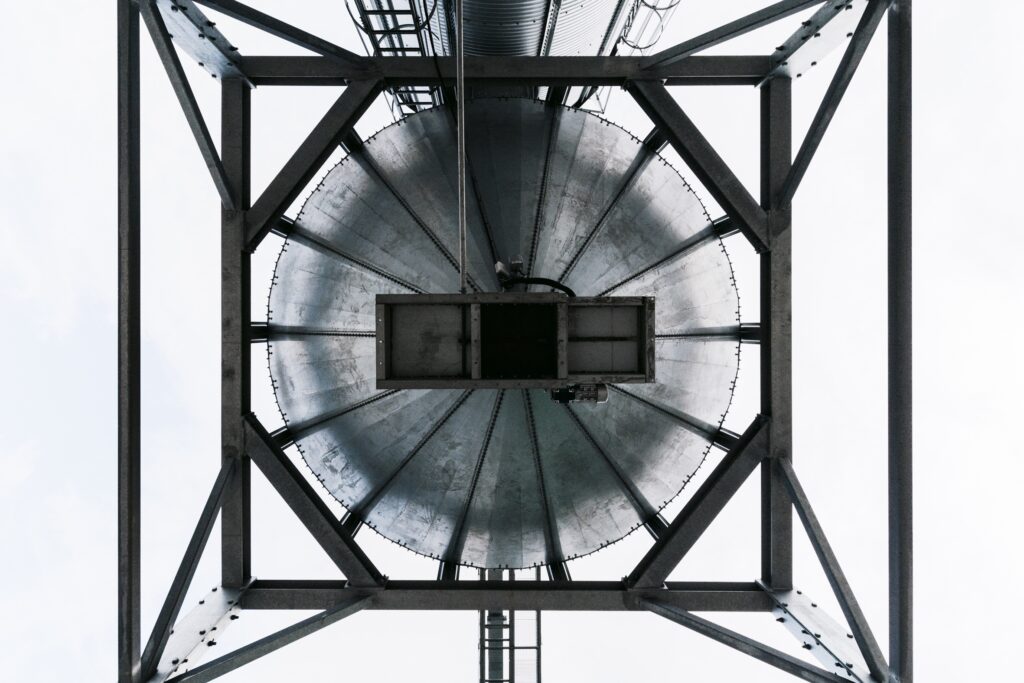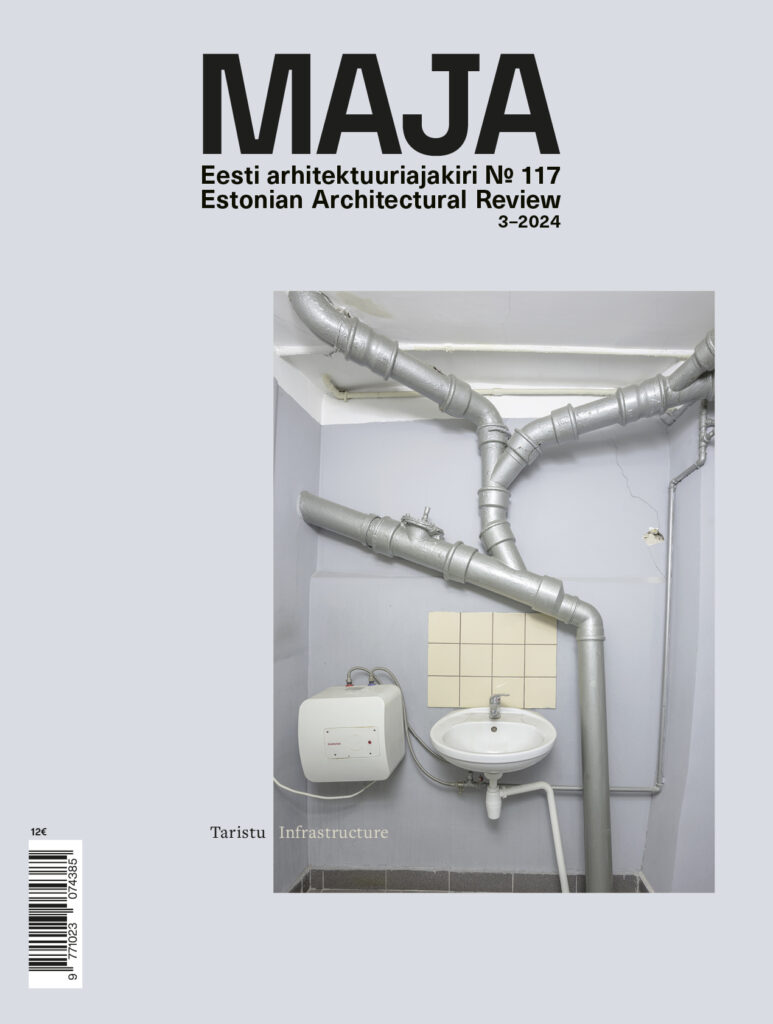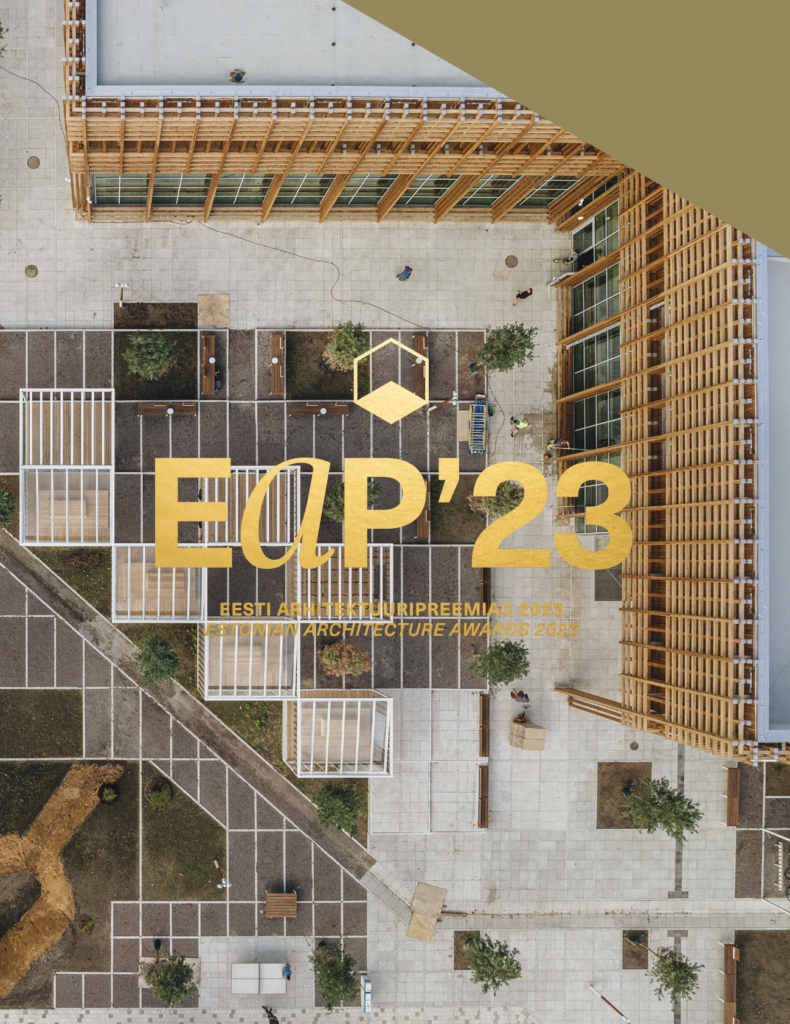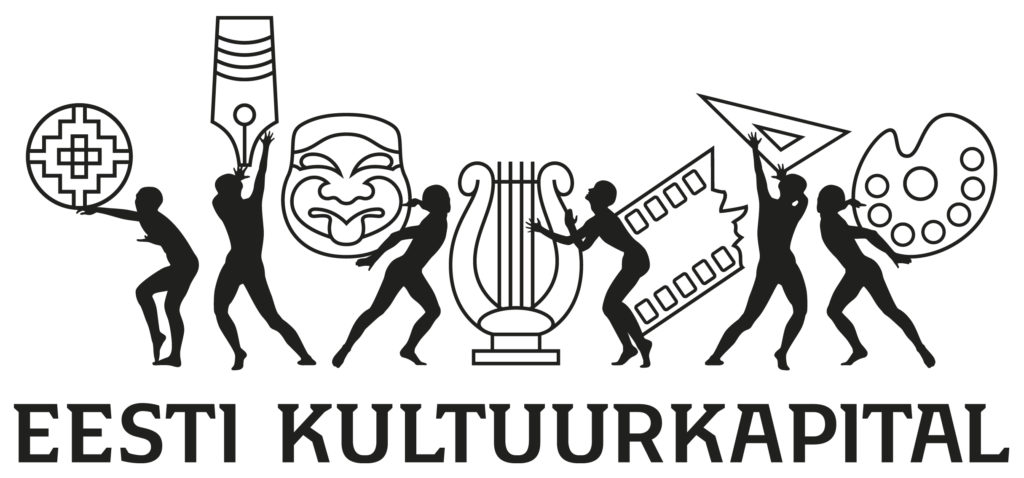For the 100th issue of the Estonian Architectural Review Maja!
To establish, create and illuminate
Critical periodical texts that both conceptualise and expand upon architecture and spatial design are without doubt a part of cultural journalism. The main objective of cultural journalism is to reflect, map and interpret developments occurring in the cultural sphere. One might, therefore, get the initial impression that cultural journalism is consequent to cultural production and processes, thus somehow secondary in nature. This type of perceived subordinacy is a widely held misconception that we face at times when, for example, we hear people saying that a critic is someone who is incapable of creating something original. I regard the tendency towards this belief to be rather misleading because it misses the deeper essence that fuels the functioning of cultural journalism in the field of culture. The work of reflection, mapping and interpretation performed by cultural journalism is not an abstract standalone, cut off from the cultural field, but an integral part of the feedback loop it shares with the phenomena and processes from which it draws its substance. Perhaps it would be more informative to paraphrase: cultural phenomena and processes are never completely independent of the cultural journalism that represents them. Cultural journalism has a (symbolically) establishing effect without which the cultural field would not be distinguishable as meaningful or evolving. Viivi Luik once said about Mati Unt’s “Autumn Ball“ that prior to that work, the Mustamäe district did not exist in a sense because no-one had disclosed it in word until then. The same is true for the relationship between cultural journalism and cultural phenomena: by reflecting, mapping and informing something, cultural journalism is simultaneously establishing, creating and illuminating that something, thus ensuring temporal and historical consistency for the cultural sphere as a whole. It is by expressly appointing meaning that cultural journalism makes manifest cultural phenomena that were hitherto mere mute and default enablers of their own potential. The same is clearly true for architectural journalism.
In the following analysis I pose the question: What might be the specifics of an architectural text in the broader framework of cultural journalism? What sets architectural journalism apart from other genres of cultural journalism? What is to be found here that occurs nowhere else? I identify these issues as an outsider on the one hand, since I am not an architectural critic but a literary scholar, and as a participant on the other, since as collegiate member of MAJA and the cultural weekly Sirp I have had the opportunity of reading and commenting on a wide range of spatial design -related texts. My hope is that an occasional absence of familiarity will be compensated by a fresh opinion of an observer of the environment.
On the borderline between idealism and materialism
So, what is it about architectural journalism that makes it distinguishable from other areas of cultural journalism? In my view, we should start seeking the answer in the nature of architecture itself. An extremely rich article on this has been written by Urmo Mets. He says that architectural practice oscillates between two seeming extremes: “Rationalists condemn and throw overboard creators with narratives of ideas and intuition, the latter, in turn, find anyone failing to reach beyond a pragmatic and technological organization of space – formalist and restricted.“ 1 But the point of Mets’ account is that both polarities are in fact intertwined and inseparable from the process of spatial design: “This kind of balancing on a very fine line is an innate part of an architect’s daily work.“ 2
Deciphering this I find that lurching into one or the other direction would weaken the end result as an overall aesthetic-pragmatic entity. Urmo Mets’ reasoning is thus built upon a notion that architecture is fertilised at the crossroads of the measurable and the immeasurable, the acknowledged and the unacknowledged, the materialist and the idealist. The framework of his discussion extends mainly across the attitudes and tuning at the foundation of “an architect’s daily work“, yet in my opinion the idea of the inextricable contexture and mutual balance between idealism and materialism can be applied to understand the nature of architecture as a discipline and, more particularly, architecture as a form of art. No other discipline of art, if we are to discuss architecture as such, is able to conjoin in as forceful a manner seemingly such disparate tendencies at the basic core of its essence, in the so-called inevitable conditions of its own ambition.3
What is the result of this combination? I suggest it is an implied pragmatic utopianism intrinsic to architecture (and by that, to architectural journalism), a trait which in no other cultural discipline (and, therefore, no other genre of cultural journalism) can be found in as clear and pure, or, perhaps more simply, as distilled a form.
On the borderline between the pragmatic and the utopian
There is a school of thought which holds that any kind of artistic endeavour is at least slightly utopian – i.e., aspiring toward something different and better from the existing paradigm in however unacknowledged or implicit a way. I think several 20th century philosophers who dealt with utopian thought might sign off on this note – Ernst Bloch, Karl Mannheim or Louis Marin, for example. Even Thomas More’s neologism “utopia“ contained an ambivalent play of words. Originally, it meant a “good non-place“ (eu/ou + topos). For More, therefore, utopia was a place better than the existing, yet nevertheless remained non-existent. Staying true to More’s initial definition, it does not take much to appreciate the ontological location of utopia in fiction, including artistic make-believe. Architectural practice conceived as artistic make-believe can also be interpreted as a fictional aspiration toward a better and brighter place than the existing.
This place can be pursued either consciously or unconsciously, to a smaller or greater degree. Fredric Jameson differentiates between utopian impulse and utopian programme: a utopian impulse is more partial, spontaneous and obscure, a utopian programme is more complete, systemic and distinct. Jameson exemplifies each: a utopian impulse is expressed by a myriad of phenomena ranging from advertising and all kinds of commercial dreamworlds to political theory and liberal reforms; a utopian programme, on the other hand, encompasses revolutionary political practice, intentional communities and manifesto-like textual experiments4. But his distinctions contain a simile for spatial design: a utopian impulse is to utopian programme what a single edifice is to the city as a whole. And unquestionably, although there exist phenomena where the distinction between impulse and programme is not defined, this type of articulation enables the framing of architectural practice entirely within utopian terms. To design a building, a city square, a memorial – means giving in, in however hidden a form, to the utopian impulse to want for something better in this world. To design an urban district or better yet, an entire city – means a utopian intent to want, in allegorical form, a whole better world itself.
But, architectural utopianism is clearly discrete from the utopianism of other art forms in at least one sense. Namely, this utopianism reflects the inseparable union of materialism and idealism that is uniquely characteristic of architecture. In literature, film or fine art, the utopian dream is hindered only by one’s imaginative and linguistic boundaries. Architectural utopianism unavoidably emanates from the pre-given social and material demands. Therefore, it is always at least slightly a pragmatic utopianism – a utopianism whose idealism is encased by pre-given possibilities of matter.
The critical utopianism of architectural journalism
This pragmatic utopianism manifests its specifics in texts on spatial design in a very direct way. Nowhere else in cultural journalism have I encountered indications to imperfections in any individual or general embodiment of spatial design that are as systematic, direct and analytical in their approach. This type of diagnostic sharpness and scrupulousness can be found at the level of individual buildings, urban parks or squares as well as more comprehensive transportation solutions, city planning or critique targeted at the functioning of institutions that regulate architectural practice. No other cultural sphere produces texts that are as candid, direct and blunt in pointing out existent shortcomings, bottlenecks and problems as are critical texts on spatial design. To support my claim, here are a few quick examples I found to illustrate the diagnostic language patterns inherent in them:
“The orientation of the project world to establish attractions from funds allocated for regional development and distributed by Enterprise Estonia begs the question, what type of experience should we be offering at culturally valuable sites and are we not excessively tied up with frivolous entertainment?“
“Unfortunately, not much thought is invested into devising designs that would offer playful and enjoyable freedom of movement on daily commuting routes, streets, etc.“
“A regrettable example can be found in the form of obstacles placed near the statue of liberty on Liberty Square that inhibit movement in an otherwise ideal environment specifically designed for skateboarders.“
“Local governments are now intent on finally making space “normal“, “modern“, losing all unpleasant objects or spatial situations representing poverty or inappropriate ideology, without giving much thought to the risk that by leveling spatial diversity we may be losing the abundance we acquired through relative poverty.“
I drew all these examples from a single issue of MAJA (summer/autumn 2018) to emphasise their high concentration. From my recent years’ reading experience I can say that this kind of architectural journalist language is indeed so thorough and consistent that from a random selection of a hundred pages it is possible to get an understanding of the most pressing bottlenecks in the entire field. But the equation has another side. The dystopian diagnostics are at least as consistently accompanied by a utopian remedy. That is to say that nowhere else are improvement proposals, solutions, recommendations or better visions pointed out as frankly, straightforwardly and frequently as in critical texts on spatial design. Here are a few more examples from the same issue of MAJA:
“More of such retrospective architectural criticism would be well received in the Estonian critical landscape.“
“Architecture should not be overly organised, prescriptive, instead it should be supportive, enabling..“
“It is possible to create novel, diverse and enriching spatial culture based on trust alone.“
“Potential brought out at the right location helps to valorise a typical journey from point A to B.“
“A sensitive spatial expert is able to take on the situation at hand and use improvements and visions of a future to lace the extant into modernity.“
“This is not a matter of devising a so-called new world, imaginary from start to finish, but an extremely attentive relationship with reality.“
“The location of the building is also highly important. And if the site turns out to be boring, it is possible to turn it into a challenge and a task.“
“The potential of the obscure part to include considerations specifically viable for every individual viewer makes an inscrutable component instrumentally fertile.“
“Architects could thus learn from neuroscientists as well as mathematicians.“
Helpful, validatory, creatively constructive language throughout texts such as these is far less frequently observable in local literary, film or art critique. Furthermore, I suspect this kind of language in architectural journalism is brought about by the “balancing on the fine line“ between materialism and idealism inherent in architectural practice that Urmo Mets talks about. Inevitable contact with preset material conditions has forced the entire discipline to take consistent critical care of itself. Whether or not this is the case here only or also abroad, I cannot say. Whether it is a direct result of the specifics of the field or a rare joint achievement of local writers – may be a matter of debate5.
Science fiction hosts a subgenre that avoids overidealising utopia and carries a much more pragmatic approach to it in contrast to the attitudes held in the early modern period or by Thomas More. This genre is called Critical Utopia and it is more prominently held by Ursula LeGuin, Marge Piercy, Joanna Russ and Samuel Delany. Critical Utopia, while describing a better world than the existing one, still rests on the conviction that a finitely perfect world is unreachable. As such, it pays more attention to the process that would take us to a better world, and to the drawbacks that would exist within it. Critical Utopia does not describe utopia so much as a place but rather as a process. My few years of reading experience suggest that current Estonian architectural journalism bears strong traits of Critical Utopianism. Fantasies are restrained on account of existing shortcomings, and current pragmatic ways on how to improve and build a better world are under closer scrutiny.
This is not to say that the entire field of architectural journalism is phrased by elucidating shortcomings and proposals for improvement as exemplified earlier in this text. Far from it. The sentences quoted above are simply the clearest expression and most easily conveyable symptom of the general utopian structure of feeling that underlies architectural journalism. This structure of feeling supports a wide array of texts that I came into particularly close contact with when I acted as jury for the architectural publication award for MAJA and Sirp at the 2019 Estonian Architecture Awards. The initial selection of best pieces included texts that provided a critical approach to an individual architectural or spatial object, but which in their development ascended above mere „criticality“ and contributed something more general to the understanding of spatial design as such. Second, philosophical and/or historical contemplations that did not concentrate on any one object per se but which had great potential at a more universal level to inspire those who actively engage in creating such single objects.
Third, interdisciplinary texts whose authors may not be involved in spatial design daily which makes their contribution all the more enriching and refreshing while implicitly acting as a reminder that no discipline is a closed system. Fourth, thoughtful reviews of architectural events that help to keep a critical and diagnostic finger on the pulse of the currently acute architectural thought. Fifth, interviews which allow seeing spatial design through the unique and individual prism of the architect or structural engineer. Each of these texts in their own way embodied that idiosyncrasy of architecture to “balance on the fine line“ between idealism and materialism, and all of them had one eye turned toward a better future.
This essay is based on the ceremonial speech given at the Estonian Architecture Awards on December 6th, 2019 in Tartu Comb Factory.
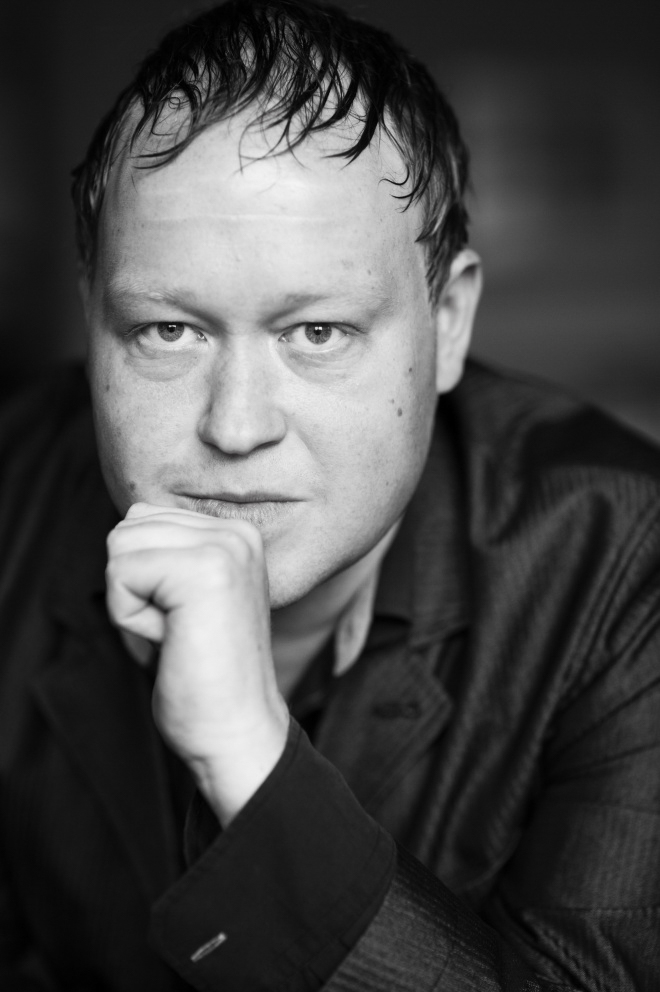
JAAK TOMBERG a literary scholar who is interested in the philosophy of literature, science fiction, utopia and utopian thought. His next study, entitled “How to Fulfil a Wish”, is about the fate and status of utopian imagination in a modern culture whose technological saturation has brought about a decisive proximity between realism and science fiction.
Header photo by Johan Huimerind.
Published in Maja’s 2020 spring edition Maja 100! (No 100).
1 U. Mets, “Of the Measurable and the Unmeasurable in Architecture.” – MAJA no 94, 2018 (summer/autumn), pp 145.
2 ibid.
3 Isn’t it so that compared to the other arts, the idea of an architectural piece (in its possible ambivalence) and its material carrier (its actual use) are the least separable? Maybe not, but I am tempted to think that way because of all the arts it is architecture that people inevitably use the most.
4 See F. Jameson, Archaeologies of the Future. The Desire Called Utopia and Other Science Fictions. London & New York: Verso, 2005, pp 3–4.
5 Such creatively constructive language may be brought about by the fact that compared to other genres of cultural journalism, the ratio of spatial design practitioners actively writing for architectural journalism is rather high. In turn, this may be a product of editors’ choices and preferences.

